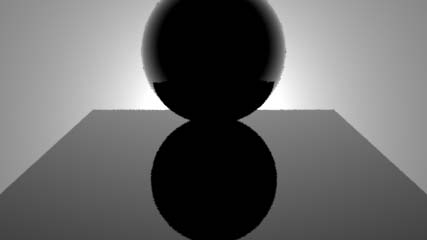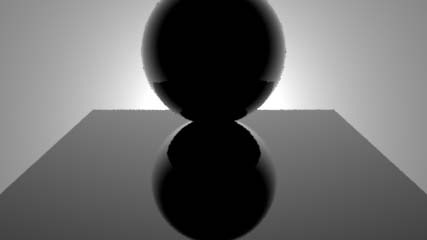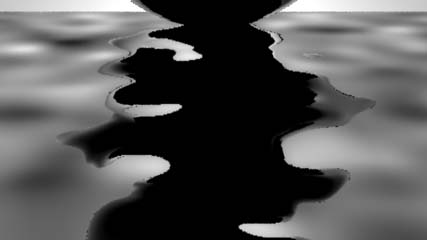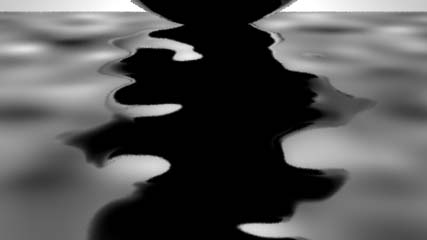Front ?
The basic code for the RSL listing 1 was taken from Pixar's "Ray-Traced Shading in PRMan"
document. If the users computer has Pixar's documentation installed and
Cutter's
preferences are set correctly
the Rman Tools->QLinks can be used to quickly access
the document.
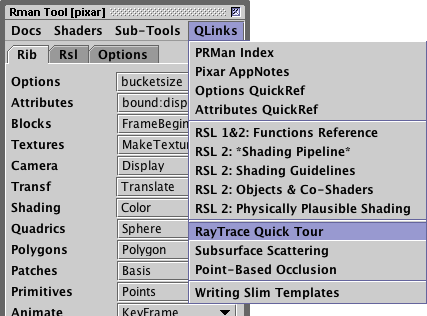
Figure 1
The simpletrace.sl code in Pixar's doc implements the test for "front facing" as follows.
if(n.i < 0) {
vector r = reflect(i,n);
Ci += trace(P, r);
}
Figure 2 shows the effect of their shader on a simple scene consisting of two objects (listing 2).

Figure 2
Beware using a Negative Test
The intention of their "if" test,if(n.i < 0)
is to ensure the shader only performs a trace from those parts of an object that face the camera ie. front facing surfaces. Yet the test actually asks the question, "is the surface being shaded not a rear face". Even though their "if" test yields the correct results I believe asking, what is in effect, a negative question to be potentially very confusing. Therefore, the sample code (listing 1) uses a slightly modified "if" test. The shader asks the question, "is the surface being shaded a front face"?
